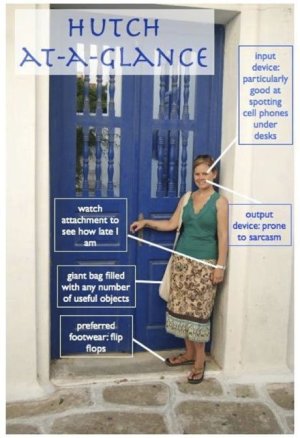Writing and Thinking Through the Student User’s Guide Assignment
Your content has been saved!
Go to My Saved Content.Note: Ashley Hutchinson co-wrote this post with social studies teacher Stephanie Noles and instructional coach Mike Flinchbaugh, both of whom are her colleagues at J.H. Rose High School in Greenville, North Carolina.
Stephanie was having one of those days when everything she thought she knew about working with young adults seemed miscalibrated -- when tempers flared without cause and student motivation disappeared despite her careful planning. That was the day we decided our students should come with written instructions.
Although a bit odd, the assignment we created is relatively simple: write a user's guide that explains to your users -- classmates and teachers -- how to work with you. In short, the task requires students to make decisions about style, structure and content (as required by the CCSS) in order to affect an audience toward a specific purpose: work well with me.
The user's guide gives students a voice in determining how teachers and peers understand and relate to them. We want young writers to tell us how to:
- Motivate them when they're lethargic
- Calm them when they're fuming
- Coach them when they’re struggling
This is a practical product written for a real audience. But we also like it because it's fun.
Creating a technical manual for oneself invites play and parody. It requires the writer to consider himself or herself through a lens used to describe products. It welcomes experimentation, but requires genuine meaning-making as students objectify themselves and investigate their own idiosyncrasies. Ashley sought to bring the practicality and silliness of this task to fruition in her junior English class.
Modeling the Process (Ashley)
I don't like to ask my students to do something without first doing it myself. After examining mentor texts, I composed my own user's guide.

With my students as my target audience, I wrote the guide not just to model for them, but also to communicate my personality and explain how to get the best performance out of me. I also sought feedback from a few "beta testers" (former students) who tweeted suggestions. ("You hate b.s. and if anyone messes with your kids, they better watch out.") Aside from these basic instructions, the process I modeled was all the directions I offered my students: "Here's your audience. Here's your purpose. Here are a few mentor texts. Now write."
Assigning the user's guide offered two immediate outcomes. First, without explicit guidelines for structure and length, students learned to work through the rhetorical choices that might shape people's perceptions of them:
- What subheadings would add to readability?
- What point of view works best?
- What voice should be employed?
I answered these questions with questions: "How will your choice affect your audience? What choice will best achieve your purpose?" Learning to answer their own questions about their writing laid the rhetorical foundation for the analytical reading we would do over the rest of the semester.
Moreover, my students and I learned some important things about each other:
- An autistic classmate has some particular interests. ("Josh is intrigued by what the universe is made of, and he likes to study up on what common things are made of.")
- Some students reserve close bonds for trusted friends. ("Once you reach Family Status, you may occasionally refer to Jonelle as Nelly, not to be confused with the rapper.")
- One student knows that her teachers find her father overbearing. ("This product's father might send you an e-mail at any time. If it sounds harsh, do not take it personally or overreact.")
- Some students are surprisingly self-aware. ("The device expects a lot of himself, and as a result gets upset when he does not perform optimally.")
Through the Social Studies Lens (Stephanie)
In my U.S. history class, we discuss the sometimes inflammatory topics of ethnicity and culture. For me, that's where the user's guide assignment becomes relevant to my curriculum. My students write about how they think people deal with them based on perceptions of their ethnicity, and explore how their cultural backgrounds affect their perceptions of the world around them. These topics deepen and make more relevant our study of immigration and culture misconceptions in the U.S.
Future Iterations of the User's Guide Assignment
Whenever iPads, lawnmowers and IKEA furniture kits are updated, so are their manuals. As our students evolve, their manuals will require updating. We envision their user's guides as fluid products, changing with them as they enter new classes. Also, we anticipate expanding this project throughout the school. No longer will we wish students came with user's guides. They actually will.
What strategies do you use to help you better understand your students?
